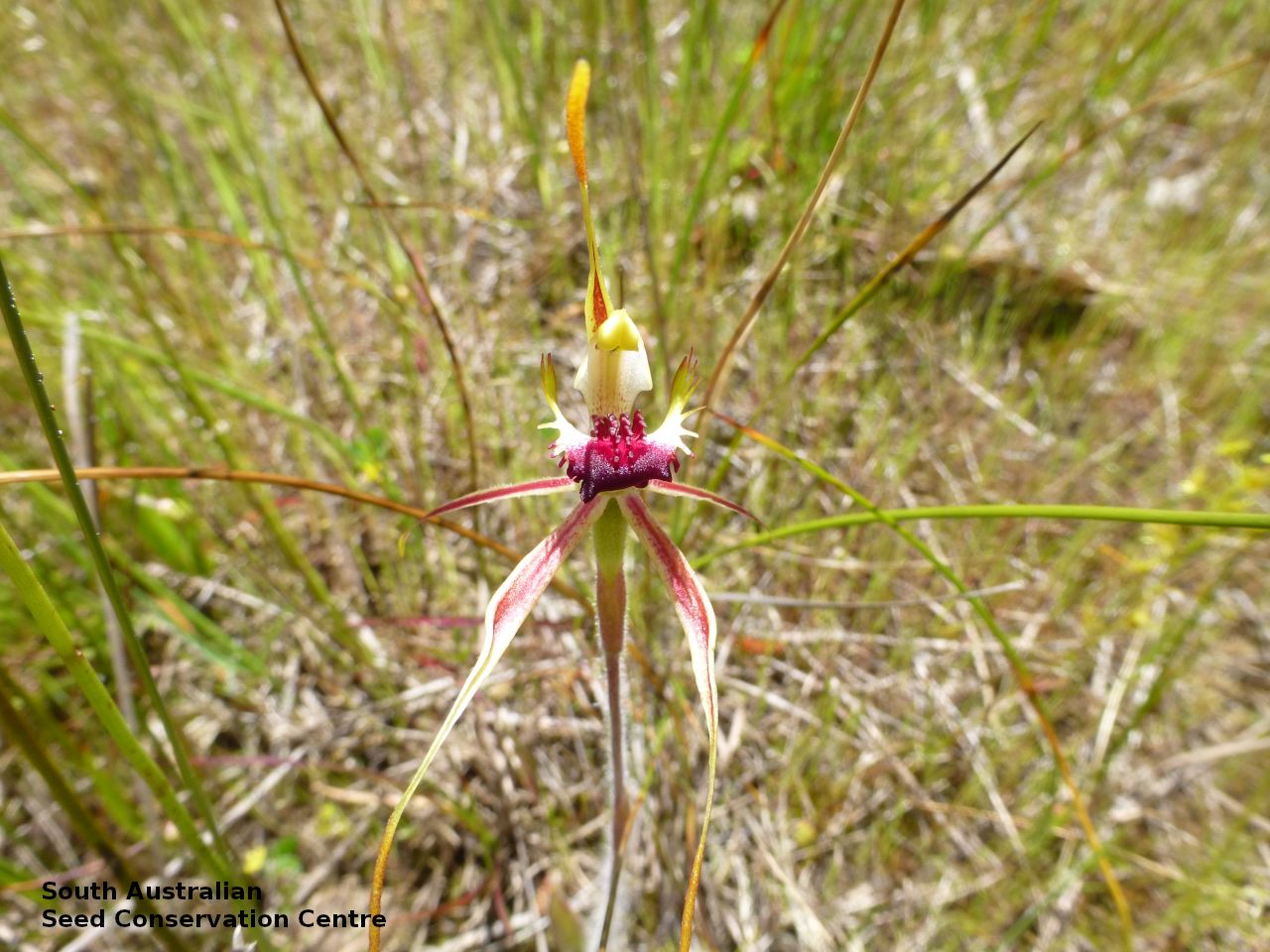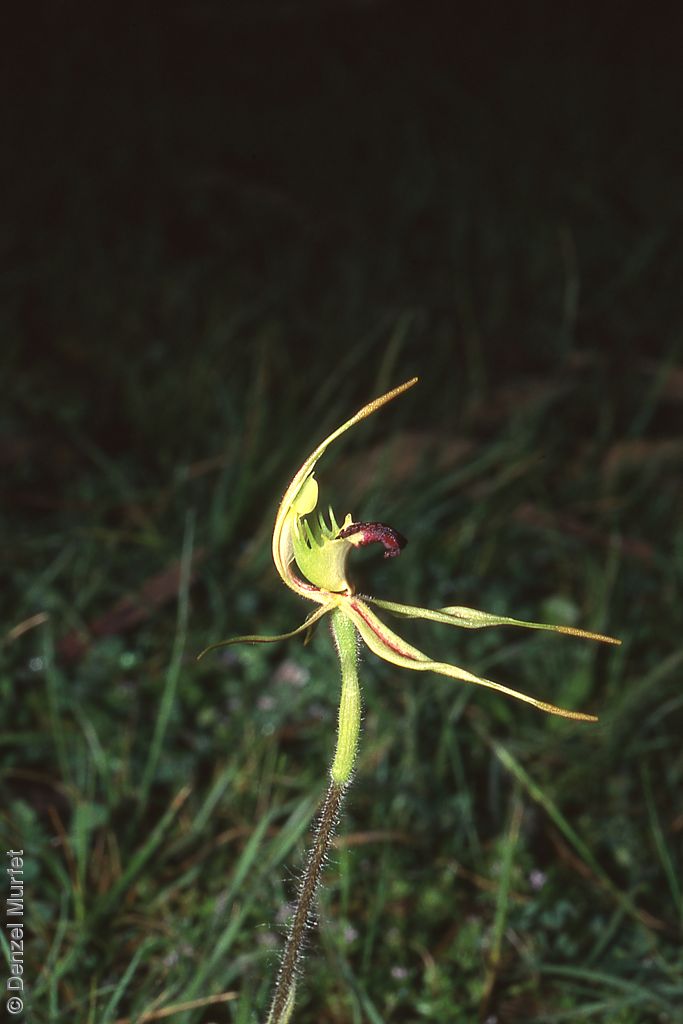










Botanical art
Prior names
Arachnorchis parva
Common names
Small Spider-orchid
Small Green-comb Spider-orchid
Etymology
Caladenia from the Greek 'callos' meaning beauty and 'aden' meaning a gland; referring to the colourful labellum and the glistening glands at the base of the column that adorn many of the species. Parva from the Latin 'parvus' meaning small, referring to the it's habit.
Distribution and status
Found in the southern Mount Lofty Ranges and the lower South-east in South Australia, growing in heath and heathy woodlands, often in damper sites. Also found in New South Wales and Victoria. Native. Very rare in South Australia. Common in the other states.
Herbarium regions: Southern Lofty, South Eastern, Green Adelaide
NRM regions: Adelaide and Mount Lofty Ranges, South East
AVH map: SA distribution map (external link)
Plant description
Annual terrestrial orchid growing from an underground tuber to 15 cm tall, with a single (rarely 2) small flower. The single basal leaf is lance-shaped and hairy, 10 cm long and 10 mm wide with red spots towards the base. Flowers are green with variable crimson striping. Sepals are 20-30 mm long with yellowish clubs and petals are shorter, the white labellum has green lateral lobes and a maroon apex. Flowers from August to October. Fruits are brown papery ellipsoid capsule. Seeds are very small brown ellipsoid seed with a long cylindrical translucent brown mesh-like covering.
Seed collection and propagation
Collect seeds during November. Collect fat capsules as they start to dry and turn brown. Pods will split and release the seeds quickly and will require monitoring. To increase the chances of collecting mature pods, it is recommended that a small breathable bag (ie. Organza bags) be used to enclose the developing capsules. Place the capsules in a container that will hold fine seeds and leave to dry for a few weeks or until the capsule split. Then carefully hold the capsule and tap it gently to release the seeds. Store the seeds with a desiccant such as dried silica beads or dry rice, in an air tight container in a cool and dry place, a refrigerator or in liquid nitrogen. For the NVC South East Orchid Project one population consisting of more than 50 individuals was recorded from the Nangwarry area. Approximately 57,000 seeds (0.04 g) were banked from this population. Seed viability was low at 31%. Seed germination for Caladenia species requires the presence of specific mycorrhizal fungi in the soil or from in vitro cultures. Under optimal conditions up to 100% germination will occur within 4 weeks.
| Location | No. of seeds (weight grams) | Number of plants | Date collected | Collection number Collection location | Date stored | % Viability | Storage temperature |
|---|---|---|---|---|---|---|---|
| BGA | 60,000 (0.039 g) | 3 pods | 19-Nov-2013 | DJD2773 South Eastern | 1-Nov-2016 | 31% | -80°C |
Number of plants: This is the number of plants from which the seeds were collected.
Collection location: The Herbarium of South Australia's region name.
% Viability: Percentage of filled healthy seeds determined by a cut test or x-ray.